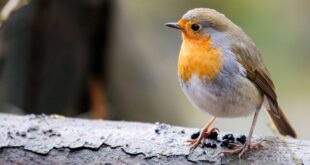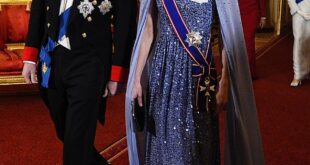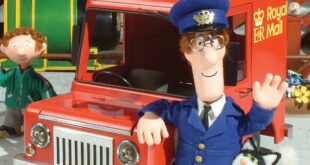Are the Balmoral tests a real tactic used by the royal family? Did Thatcher loathe her time spent at the castle? And did Prince Philip really tell Charles to marry Diana? Let’s unpick the historical truths of episode 2…
(This article contains spoilers for season 4, episode 2 of The Crown)
What are the Balmoral tests?
Having been invited to spend a weekend with the Queen and her family at Balmoral, Thatcher and her husband, Denis, are seen travelling to Scotland by aeroplane. During the journey, Denis tells Thatcher he has been warned by Malcolm Muggeridge [English journalist and satirist] to watch out for the “infamous Balmoral tests” to which the royals routinely subject all their guests “to find out if someone is acceptable or not acceptable”.
So, what exactly are the Balmoral tests? Are they real? Former royal butler Grant Harrold, who worked for the royal family for seven years and met many guests of the Queen, told the Daily Record: “Balmoral, like Sandringham, is the Queen’s private family home. It is a great place to be around the royal family and for them to get to know you. It can be a bit of a test to make sure you pass the muster. You are going to want to dress the part, speak the part and behave the part.
“For Princess Diana that was easy [because] she came from a similar background. But that’s not true of all the guests who are invited to Balmoral.”
Margaret Thatcher, episode 2 of the new season of The Crown proves, is one such guest. From wardrobe faux pas to awkward dinner conversation, the prime minister and her husband look sorely out of place and Thatcher disastrously fails to master royal protocol.
The couple arrive to pre-dinner drinks horribly overdressed, to audible gasps and sneers (“I think we failed that test,” Thatcher tells her husband), and the house manager notes, dubiously, the prime minister’s failure to pack any outdoor shoes. True to history, Thatcher reportedly never brought suitable footwear to Balmoral and often ended up having to borrow wellington boots.
In episode 2, the next day the prime minister finds herself at the mercy of what Dominic Sandbrook describes as Princess Margaret’s “extraordinary world-class rudeness”. Margaret chastises Thatcher for working on a bank holiday; for sitting at a desk in a chair that once belonged to Queen Victoria (“no-one sits in that chair,” she asserts); and for referring to Elizabeth II as Margaret’s “sister” rather than “the Queen”.
Later in the episode, while watching a Haggis Caber toss, Thatcher wonders aloud to her husband: “What am I doing here, miles from Westminster, miles from reality, wasting precious time? I’m struggling to find any redeeming features in these people at all.” She agrees with Denis’s suggestion the royals are “boring, bookish and rude”, and concludes that “If this country really is to turn the corner then I say it needs to change fundamentally, top to bottom.”

The weekend is such a disaster that Thatcher and Denis are seen cutting their trip short, hurrying back to London to deal with a supposed “political crisis”. Indeed, Thatcher is said to have viewed her early visits to Balmoral as comparable to “purgatory”, according to the Queen’s biographer, Ben Pimlott. On the last day of the visit, Thatcher would arrange to leave at 6am. “She couldn’t get away fast enough,” one former Whitehall official noted.
Historian Dominic Sandbrook agrees that Thatcher really did loathe her stays at the castle (“nobody enjoys them!”) and that she would have “had no time” for stuffy courtiers. But in reality, the prime minister never had any real intention of trying to change or overhaul the monarchy.
“She didn’t have much time for the old school-tie establishment generally, and the Queen and the Palace were part of that complacent world that Thatcher was all about destroying and that she thought had to go,” says Sandbrook. “But Thatcher was also a great traditionalist – the famous example being that one reason she didn’t privatise the Post Office was because it was called Royal Mail, and you couldn’t possibly privatise something that had ‘royal’ in the title, she thought.
“Mrs Thatcher was a very complicated person – on one hand she was a moderniser and a Roundhead who wanted to kick out the old order, but at the same time she described herself as a Cavalier and there was a romantic schoolgirl side to her which loved the royal pageantry and flummery. Her ideal would have been to keep all the pageantry and the pomp but for everybody involved in it to be ultra-Thatcherite! Ultimately, she didn’t like ‘wetness’ and she thought that the social class associated with the palace – posh people and landed estates –were wet, weak and chinless; that they didn’t have the guts to do what needed to be done.”
Balmoral Castle history
Balmoral is Queen Elizabeth II’s private Scottish estate, a majestic property located by the river Dee in Aberdeenshire. Every year the Queen spends the summer break at Balmoral, where she is joined by other members of the royal family. There, the family enjoys hunting, fishing and hiking, and exploring the grounds on horseback. Balmoral is widely thought to be the Queen’s favourite residence.
Unlike the royal palaces, which belong to the Crown, Balmoral is one of two residences privately owned by the royal family (the other being Sandringham House in Norfolk).
The first home at Balmoral was reportedly built in 1390, but it wasn’t until 1852 that the property came into the hands of the British royal family. Queen Victoria and her husband, Prince Albert, bought the 50,000-acre Balmoral estate in 1852 (according to some reports Albert purchased it as a gift to his wife), and the following year began building a grand Scottish baronial castle to replace the smaller existing building, landscaping the grounds and adding a model farm. The castle, constructed from local granite, was completed in 1856.
When Queen Victoria died in 1901, Balmoral passed to King Edward VII. Ever since, it’s been passed on to the successive generations of the royal family.
Prince Charles and Princess Diana spent part of their honeymoon at Balmoral in 1981, and it is where their sons, Prince William and Prince Harry, learned of their mother’s death in 1997.
Diana at Balmoral
In The Crown, Lady Diana, unlike Thatcher and Denis, is seen passing the Balmoral tests with ease. Having lived on the Sandringham Estate as a child (her father had been an equerry to the Queen), she had grown up mixing in royal circles and knew the protocols. And, unlike Thatcher, she was very au fait with hunting.
Looking perfectly at home at Balmoral, in episode 2 she entertains and amuses the royals at dinner with her jokes and self-deprecation, and the next day impresses her future father-in-law, Prince Philip, on an early-morning stag hunt (his invitation, it quickly becomes clear, is an attempt to grill Diana and establish whether she could be a suitable bride for his son). This, says royal biographer Penny Junor, is true to history: during her stay at Balmoral in the summer of 1980, Diana “went down a storm,” says Junor. She “seemed to be the perfect girl. She was funny, she was fun, everybody seemed to love her – she made everyone laugh and she seemed to adore Charles.”

It is also highly likely that Philip and Diana really did go stalking at Balmoral, as The Crown suggests, says Junor. “Diana grew up in a family that hunted, shot and fished, they were real country people. Her father held shoots at the Spencer estate, Althorp, which of course is where she first met Charles in 1977. I think she would have been very knowledgeable about stalking – as the daughter of an earl, that would have been part of her education.”
But despite having grown up in the countryside, hunting and shooting, as an adult Diana lost interest in these pursuits and was not the great lover of the outdoors she pretends to be in episode 2. She is seen to tell Prince Philip “I’m a country girl at heart”, but this, says Junor, was not the whole truth. “When Charles and Diana first met, she gave the impression that she loved the countryside, loved horses, loved long walks in the heather and the mud. But the reality was actually she didn’t – she wasn’t interested in dogs and she didn’t like horses; she loved girly lunches at San Lorenzo and shopping in Harrods. She was a city girl at heart, she much preferred London. Even as a child she would have spent a lot of time in the city because her mother had a house there [Diana’s parents separated when she was just six years old], and after they left school, her elder sisters also had flats in London that she used to visit.”
The real history behind The Crown
Want to know even more about the real events from history that inspired the drama? Read more from the experts…
Did the royal family encourage Charles to marry Diana?
Having passed the Balmoral tests with flying colours, in episode 2 Diana gets Prince Philip’s seal of approval as Charles’s future bride – to the extent Philip summons his son for a conversation in the hanging room and urges him to propose. “Oblivious to the grotesque symbolism, it might as well have been me strung up and skinned,” Charles is seen later telling his lover, Camilla, over the phone.
But did Prince Philip really tell Charles to marry Diana? Yes and no, says Junor. There was no conversation in person, and certainly not at Balmoral in the summer of 1980. In early 1981 Philip sent a memo to his son urging him to make up his mind. You either marry this girl or you let her go, he wrote. But, says Junor in this article for HistoryExtra, this message was fatefully misinterpreted by Charles. “He thought he was being told that he must marry Diana – and so he asked her to marry him.”
And how historically accurate is Charles’s conspiratorial telephone conversation with Camilla, did it really happen? “Camilla was very close to Charles, she was his confidant, so he may very well have shared his thoughts and doubts about Diana with her, just as you or I would with our closest friend after meeting somebody new,” says Junor. “But I don’t think it would have been anything sinister. And I’ve never heard any suggestion the royal family at that time was telling Charles ‘come on, Diana is great, you must marry her’. They certainly liked her, and they might have said she was lovely, but remember, the royal family are not that communicative – I’d be really surprised if they had all openly encouraged Charles to marry her.”
Later in the episode, Charles is seen in conversation with his sister, Princess Anne, bemoaning the fact he and Diana “hardly know one another”. This, says Junor, is true to history: Diana later claimed that she and Charles had met only 13 times before they became engaged. “And most of that time they’d not spent alone together,” Junor adds. “So they really didn’t know one another at all.”
At the end of episode 2, Diana is seen being hounded by the press outside her flat and seeming curious about the attention. “I think at first Diana would have found the press interest quite flattering and exciting,” says Junor. “Here she was, suddenly the centre of attention. But even at the beginning it had its darker moments – when reporters climbed up drainpipes hoping to get into her apartment, or turned up posing as plumbers or bread delivery drivers, or tried to get information about her from her neighbours. I think she was conflicted about whether she found it exciting or whether it was scary. She was followed everywhere she went; it certainly wasn’t all fun.”

The Crown S4 episode guide: the real history
Thatcher’s battle with the ‘wets’: why was the 1981 budget so controversial, and who did the prime minister fire?
Elsewhere in episode 2, Margaret Thatcher is seen facing opposition from within her own party over her chancellor Geoffrey Howe’s controversial 1981 budget plans, which included tax hikes, strict new spending limits on government departments, and the abolition of the 25p rate of tax. The 1981 budget statement was one of the most contentious the British Treasury had ever submitted.
In episode 2, Thatcher’s cabinet balks at her proposed “wholesale configuration of the state and its institutions”, telling her she is being “too rash, too reckless… And you risk turning not only the country against us but your own party”.
Why was the 1981 budget so divisive? Historian Dominic Sandbrook explains: “This was not David Cameron/George Osborne austerity; what made the 1981 budget so controversial was that Britain was already in a very deep recession with massive unemployment, and that’s normally the time when a government would cut taxes to inflate the economy and get people spending in order to work their way out of recession. But instead Thatcher’s government raised taxes because they wanted to cut public borrowing in order to cut the deficit – they felt this would enable them to cut interest rates, which at the time were very high, and that they would be able to stimulate the economy that way.

“It was incredibly controversial, because for the past 30 or 40 years the orthodoxy had been that if you were in a mess you must cut people’s taxes and give them more money to spend. Instead Howe piled on the pain, the burden of taxation increased rather than decreased.”
Towards the end of episode 2 of The Crown, fed up with the “patronising bullies” in her cabinet, Thatcher is seen firing three cabinet critics. Who were they? In reality, on 15 September 1981 Thatcher famously sacked deputy foreign secretary Sir Ian Gilmour; education minister Mark Carlisle; and Lord Soames, who was government leader in the House of Lords. Thatcher also moved employment secretary James Prior, who had been at odds with her economic strategy, to the Northern Ireland office.
Many of these cabinet critics were from wealthy, privileged backgrounds – according to Sandbrook, Lord Soames remarked that “he would have treated one of his gamekeepers with more courtesy”. Mrs Thatcher later wrote: “I got the distinct impression that he felt the natural order of things was being violated and that he was, in fact, being dismissed by his housemaid.”
Among their replacements were people like Norman Tebbit who, Sandbrook says, Thatcher thought were “harder” because they were “self-made, ‘Essex man’ kind of Tories”.
Read more real history behind The Crown here
NEXT EPISODE: S4 E3 real history: Diana’s struggles, the ‘G’& ‘F’ bracelet, and a royal engagement
Emma Mason is the digital editor at HistoryExtra
With thanks to Penny Junor, royal biographer and author of 10 books on members of the royal family, and historian Dominic Sandbrook, an expert on Margaret Thatcher and author of Who Dares Wins (Allen Lane, 2019)
Source link



